It’s hardly been a secret that MV Agusta has been developing an adventure bike but the launch of the new Lucky Explorer brought a surprise as there are actually two new models in the range.
The first is as expected – a three-cylinder model based around MV’s existing triple, albeit in a next-generation form – while the second marks the firm’s entry into a completely different, more affordable market and is the first fruit of a tie-in with Chinese firm Qianjiang.

We’ll kick off with the bigger bike, dubbed Lucky Explorer 9.5. It’s powered by an upsized version of the MV triple, taken from 800cc up to 931cc with an increase in both bore and stroke. That means it has new cylinders, pistons, crankshaft, conrods and a new cylinder head, so it’s very much a next-generation version of the motor. Peak power is relatively modest, as befits an adventure bike, topping out at 90.5kW and 10,000rpm. That’s rather less than the smaller 800cc engine, but the bigger triple is a torque-focussed design, with 102Nm at 7000rpm, with a lower 12.5:1 compression ratio.

It sits in a steel frame, with an aluminium double-sided swingarm and Sachs electronically-controlled suspension at either end. Weight, at 220kg dry, isn’t as light as we might have hoped, but the Lucky Explorer 9.5 is genuinely intended to have the off-road ability, with a 21in front and 18in rear-wheel and suspension travel of 220mm at the front and 210mm at the back.
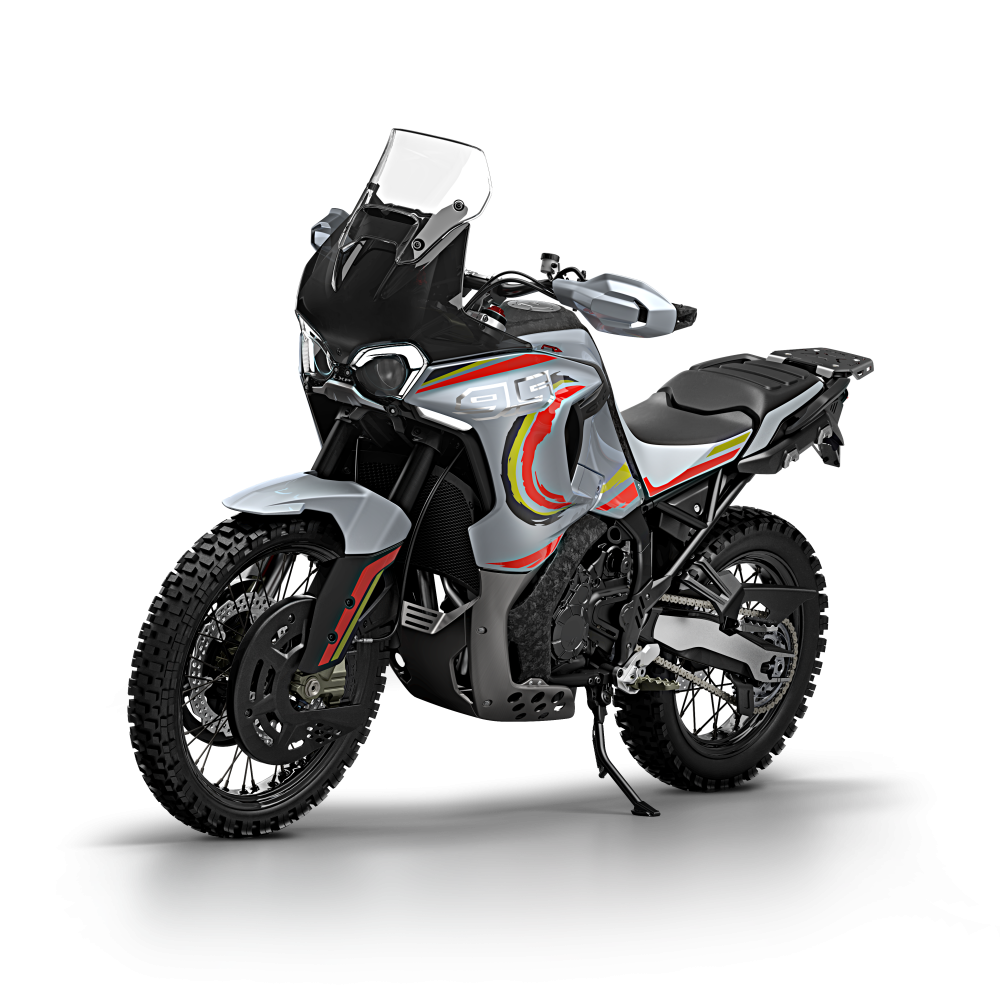
Kit includes a large, 7in TFT dash, Bluetooth and Wi-Fi enabled, along with IMU-operated traction control and ABS, GPS, cornering lights, launch control and cruise control as standard, with the navigation and bike setup accessible via the MV Ride phone app.

While an up/down quickshifter is standard, the bike will also be offered with the option of a Rekluse automatic clutch and ‘Cyborg’ electro-actuated gear shift, allowing push-button changes and eliminating the need to ever touch the clutch lever. That version of the bike clearly makes a rival for Honda’s DCT-equipped Africa Twin.

The second Lucky Explorer is the 5.5 – a 554cc parallel twin machine that features similar styling, clearly inspired by 1980s and 90s Paris-Dakar bikes and particularly the Cagiva Elefant Lucky Explorer. However, seasoned bike-watchers might spot some familiar parts on this seemingly all-new machine.
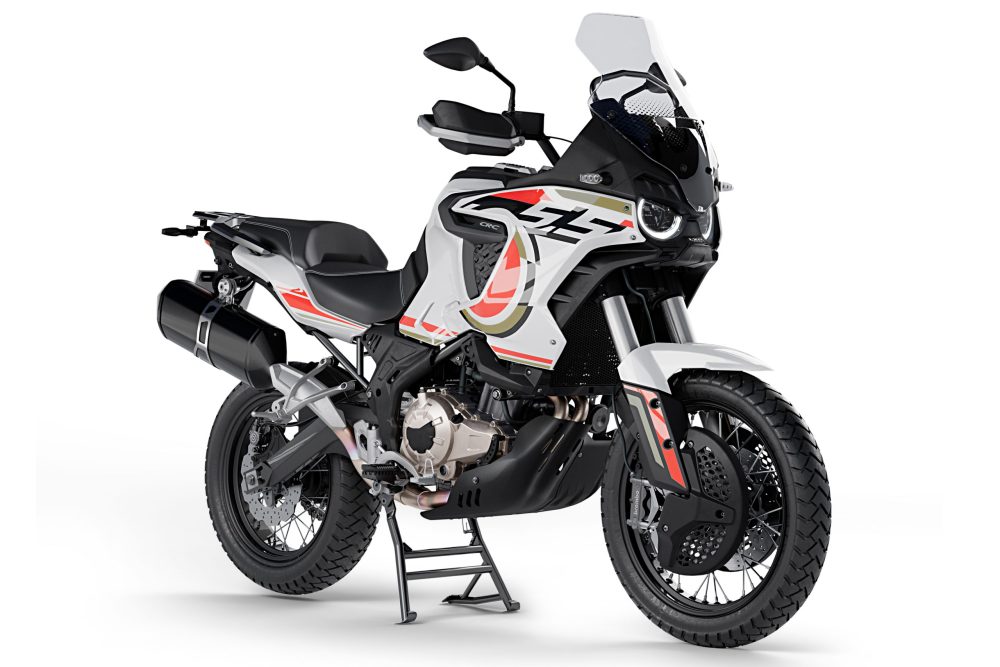
It’s the first result of MV’s tie-in with Qianjiang, owner of both the Chinese market QJMotor brand and the more familiar Benelli name, and the Lucky Explorer 5.5 shares more than a little with bikes that are already offered by both companies. The engine is essentially the same twin that’s used in the Benelli TRK502 (currently the best-selling motorcycle in Italy, which will be promising news for MV), but with a slightly enlarged capacity to bring it from 500cc to 554cc. The frame is also shared with the Benelli, and in China QJMotor’s SRT500 uses the same components, as well as featuring the same alloy swingarm that’s seen on the MV (Benelli’s version has a steel swingarm). We’ve already seen type-approval documents that show both QJMotor and Benelli will soon adopt the 554cc engine, too.
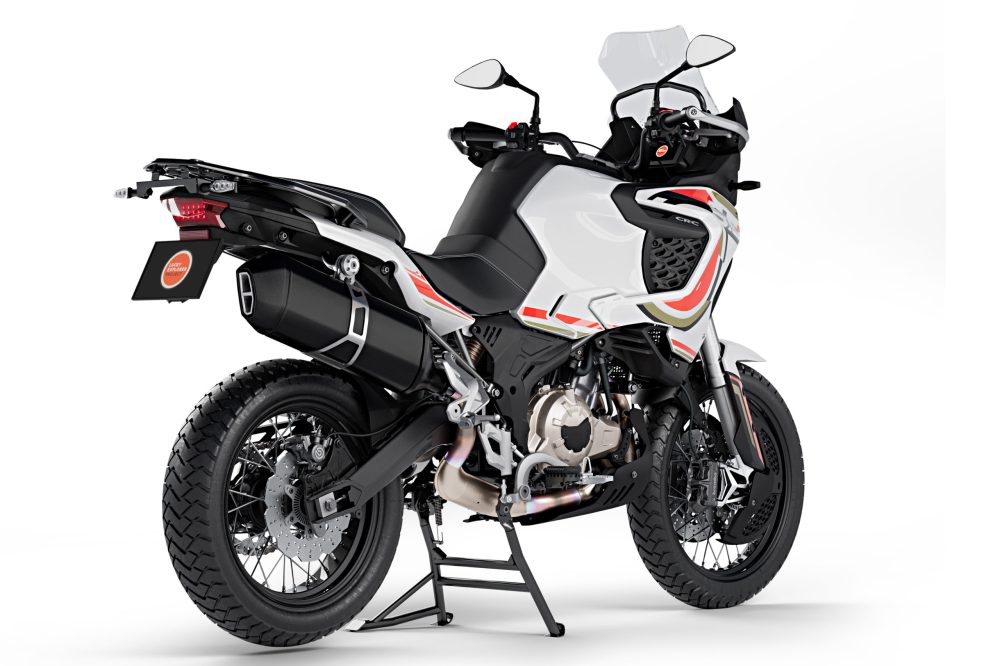
The MV 5.5’s suspension is also similar to the existing Benelli and QJMotor models, with KYB kit at each end, while the brakes are from Brembo. At 220kg dry it’s as heavy as the 9.5, but the peak power of 35kW is less than half that of the bigger, three-cylinder model.
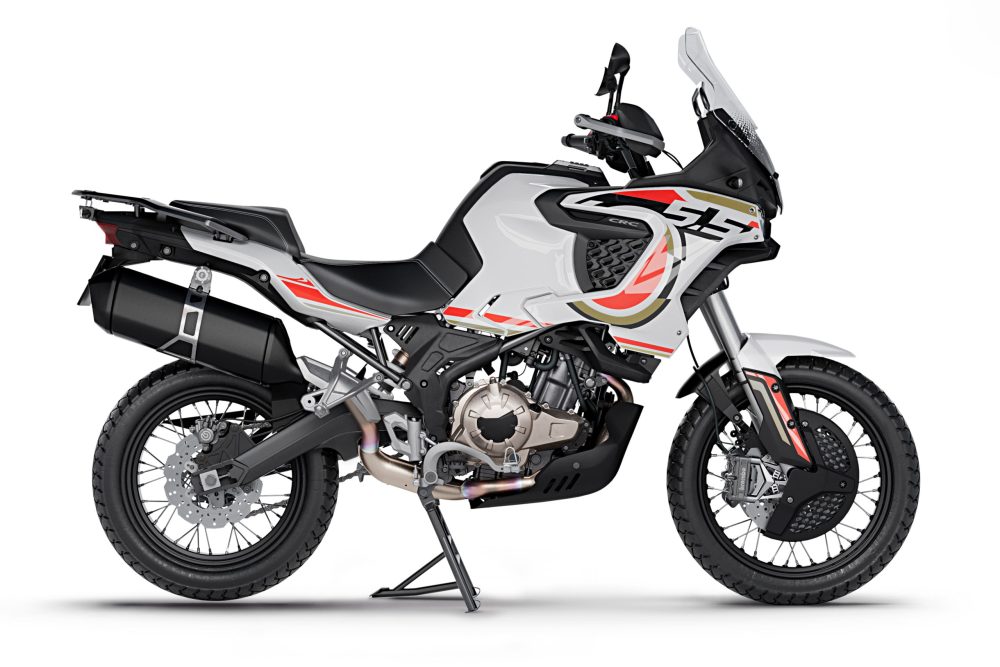
Specs include a 5in TFT dash with Bluetooth and GPS, but the most important feature of the MV Lucky Explorer 5.5 is sure to be a tempting price that brings the MV brand to a whole new group of riders.
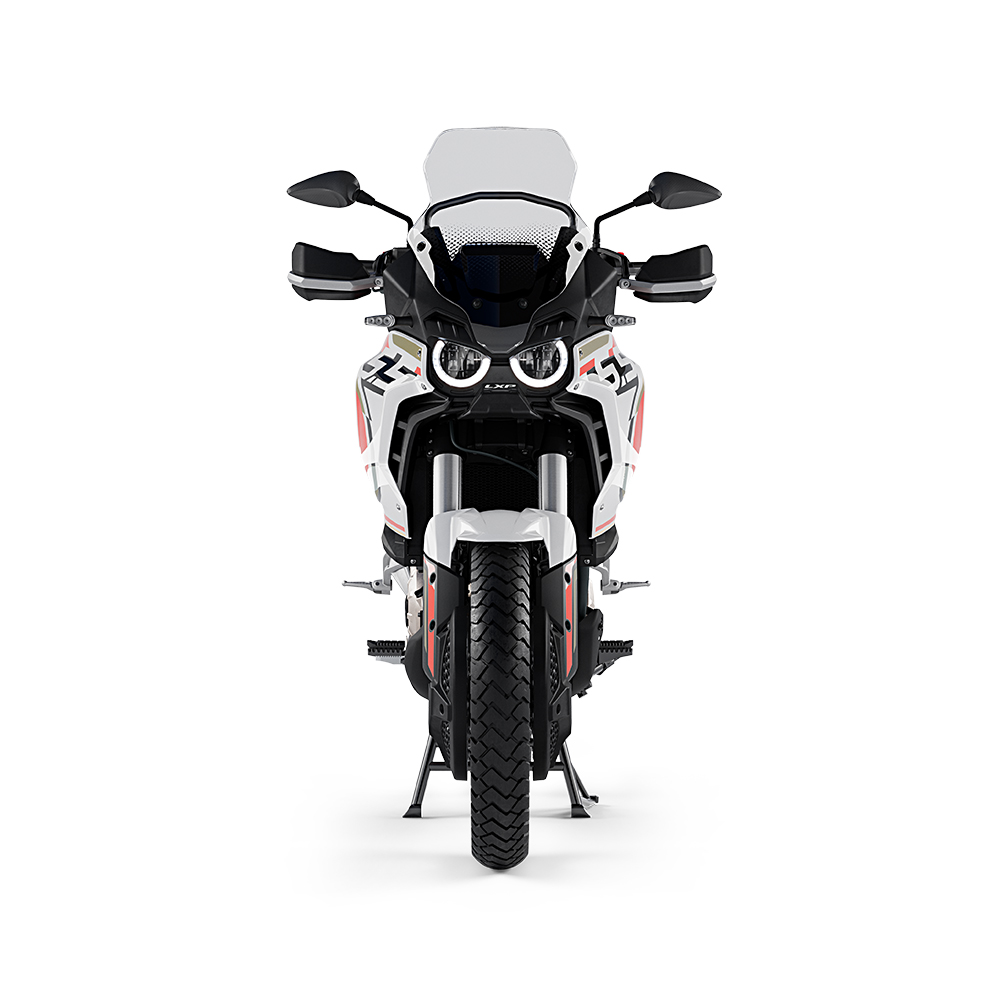
Style-wise, the 5.5 is a good-looking machine, its circular lights under a frowning upper fairing arguably making it more attractive than the larger model. That’s a big advantage over the Benelli TRK502, which is awkwardly shaped at best.
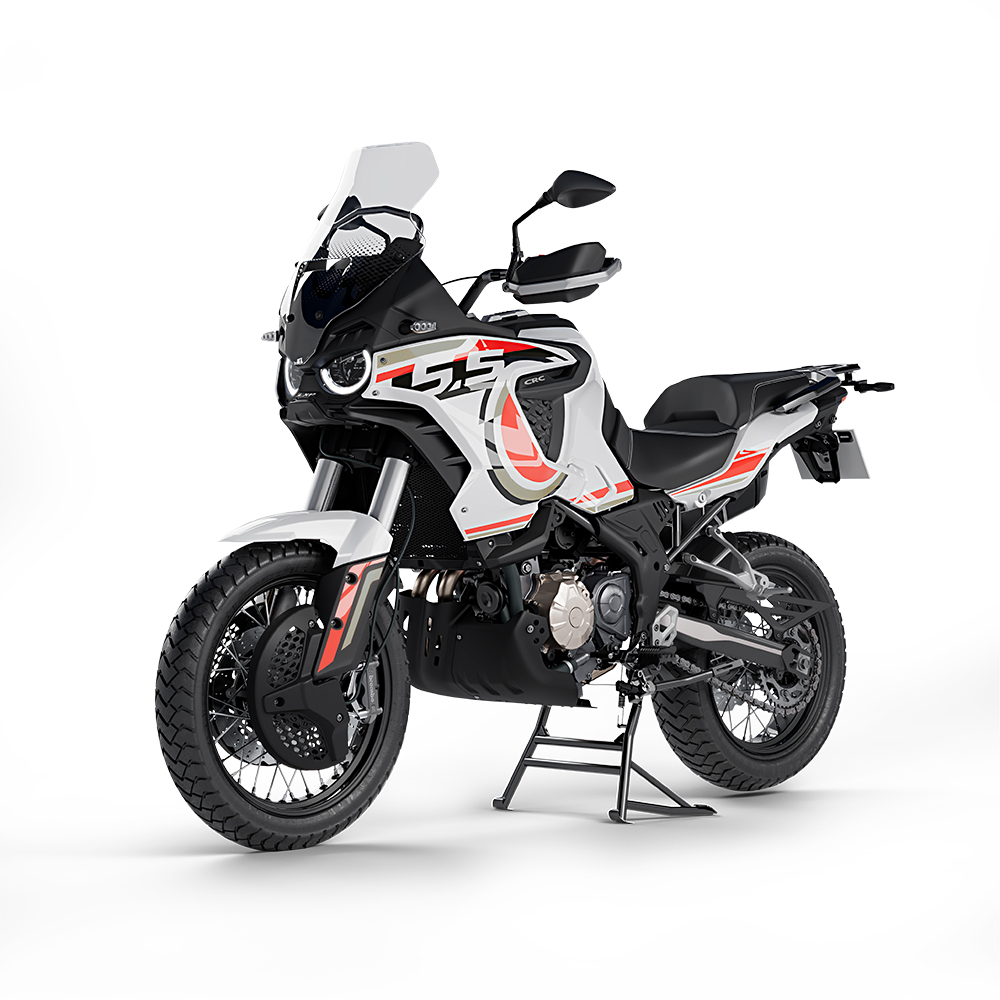
The Lucky Explorer models, paying tribute to the old Cagiva Elefant, will have an unusual parallel later this year when Ducati unveils its new DesertX adventure bike. Powered by the 937cc V-twin with around 110hp, it’s going to be a direct rival to the Lucky Explorer 9.5, and it’s inspired by exactly the same Cagiva machines of the 80s and early 90s – the Ducati DesertX concept shown in 2019 even had similar Lucky Strike inspired colours to those adopted by the new MVs.
Back in the 80s and the first half of the 90s, MV Agusta was a dormant brand owned by the Castiglioni family, which also owned Ducati and Cagiva, so the original Elefant Lucky Explorer was Ducati-powered. Now Cagiva is the dormant company, but it’s owned by MV Agusta, so both Ducati and MV can lay claim to the original Cagiva Elefant heritage.

Ben Purvis











